The condition of the skin is one of the priority issues for a woman, so if dark age spots begin to appear on the face, the causes and treatment are sought with special diligence. Is such a visual defect dangerous, why is it observed in children? Is it possible to treat a face with hyperpigmentation on your own and what methods of removing spots does modern cosmetology offer?
What are pigment spots
Each person's skin cells contain a certain amount of melanin pigment, which is responsible for its shade - the more it is, the darker the skin will be. In albinos it is completely absent, in others it is observed to a lesser or greater extent. If a person is healthy, the distribution of melanin will be even, which will give the skin an even, beautiful shade. If there are any disturbances inside that affect the production of melanin, focal accumulations of it appear, which are called pigment spots.
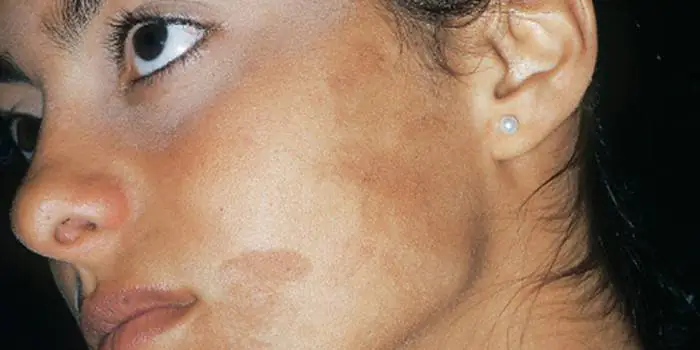
Symptoms
Pigment spots do not cause a general deterioration in well-being - apart from the appearance of a cosmetic defect, women and men do not notice any changes in themselves, unless diseases of the internal organs are among the causes of hyperpigmentation. If spots form in the upper layer of the skin (epidermis), they can be light in color and small in size. Mostly freckles.
Hyperpigmentation in deep layers may have the following characteristic features:
- a dark shade of brown and even black;
- changes in relief.
Separately, doctors mention cases of pigment spots due to a chemical burn - in such a situation a person will:
- complain of itching;
- experience discomfort when touching the stain;
- see a large area of the lesion (mainly the area of the nose, forehead).
Causes
The key prerequisite for the formation of such skin defects is genetic predisposition - in rare cases, it causes facial hyperpigmentation even in infants, although it mainly makes itself felt later, as the hormonal background develops. However, spots can also indicate skin diseases or internal disorders, even dangerous pathologies. A few of the most obvious options for what causes age spots on the face:
- Due to prolonged exposure to ultraviolet radiation.
- In case of hormonal imbalances, especially those associated with pregnancy, pigment spots can form not only on the face - they often affect the entire body, but doctors do not recommend treatment in such a situation: after childbirth, the body will return to normal.
- If the spots that appear are yellow in color, the area of hyperpigmentation is extensive and is localized mainly in the lower half of the face, the reason for their formation may lie in liver diseases.
- Due to kidney pathologies and malfunctions of the endocrine system, large flaky spots are formed.
Separately, doctors remind that the face and body can become covered with age spots:
- with long-term use of hormonal drugs (especially incorrectly selected ones);
- after the work of an unqualified cosmetologist (often with chemical peeling);
- due to burns from chemicals;
- after laser peels to eliminate acne;
- after using phototoxic drugs (antihistamines, tetracyclines, sulfonamides) simultaneously with sun exposure.
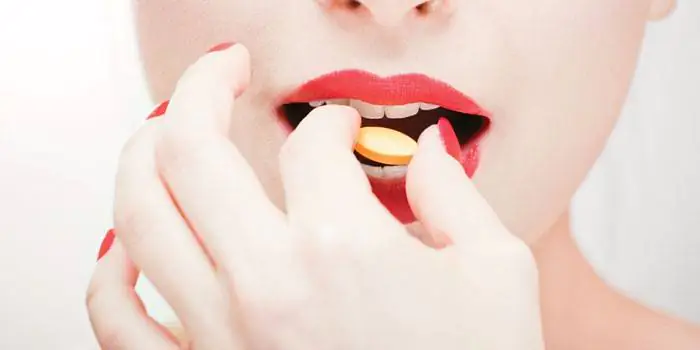
Dark spots on the face in the elderly
As a person ages, the process of melanin production changes, as does the amount of this pigment in melanocytes, so all older people are susceptible to the appearance of age spots (especially on the face). However, a special risk group consists of those who are actively exposed to sunlight, which provokes increased melanin synthesis. In addition to this reason for the appearance of brown (mostly) spots in the elderly, doctors identify several more:
- Deficiency of vitamins and microelements, especially pronounced as the body ages, can increase the severity of pigment formations.
- In women, hormonal imbalances caused by menopause are a common cause of hyperpigmentation, which primarily appears on the hands and then spreads to the face.
- The causes of pigmentation on the face include malfunctions of the intestines and kidneys, but the spots in such a situation are large, not always brown - they may have a yellowish tint.
Types of pigmentation
Doctors identify 5 main types of hyperpigmentation based on their appearance and the reasons why they appear:
- Freckles. A natural reaction of fair skin that occurs after prolonged exposure to UV rays.
- Lentigo. Age spots.
- Chloasma. These are hormonal dark pigment spots on the face - the causes and treatment depend on the degree of changes in the ratio of hormones: in pregnant women everything normalizes on its own, in case of endocrinological diseases it is necessary to resort to complex treatment.
- Vitiligo. They are also associated with a malfunction in the endocrine system, but tend to increase over time, have a dark color and a large affected area.
- Moles. They are congenital in nature; treatment or removal of pigmented formations of this type requires serious indications: precancerous condition, etc.
How to get rid of age spots on the face
A treatment regimen cannot be drawn up without understanding the cause of hyperpigmentation: if pregnancy or contraceptive use is to blame, after stopping them (or after childbirth) the problem disappears on its own. Age-related pigmentation also cannot be eliminated - you can lighten its foci (using home skin whitening methods or in a salon), but not get rid of it completely.
If the hyperpigmentation is not freckles or lentigo, and we are not talking about birthmarks, the person needs to be examined by a neurologist, gastroenterologist, dermatologist, and complex therapy is used for treatment:
- A course of laser therapy to reduce spots.
- Skin whitening procedures (at home and in the salon).
- Treatment of diseases that cause hyperpigmentation.
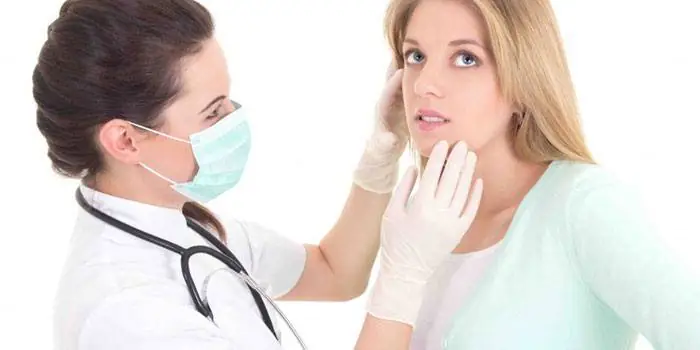
Cosmetic preparations
You need to decide how to deal with age spots on the face using potent cosmetics together with your doctor: along with effective treatment, you can get a lot of side effects. This is especially true for pregnant women. Mostly doctors use drugs based on:
Special creams
If you have undertaken intensive treatment of a cosmetic defect, doctors may advise you to whiten pigmented areas on your face using the following means:
- Retin-A - cream effectively eliminates any age spots on the face - the reasons for their appearance and the treatment prescribed by a specialist do not affect its effectiveness. The course is 30 days, the drug acts by reducing the amount of melanin.
- VC-IP works with ascorbic acid, is one of the anti-aging agents, and helps well with lentigo, after chemical and laser peels. The course is from a week to a month.
Cosmetic procedures
Among the treatment methods that cosmetologists can offer, the most significant results are provided by phototherapy, laser and chemical peeling: before-after photos clearly show the difference after several procedures. Features of these techniques:
- Chemical superficial peeling helps to treat age spots on the face by launching regenerative processes in the skin, so the effect will be long-lasting. Complete elimination of the pathology is possible.
- Phototherapy is the effect of infrared rays on pigmentation, but for dark skin this is not the best treatment method, since all melanocytes are affected.
Laser peeling
If a woman is tired of looking for ways to remove pigmentation from a large area on her face, a cosmetologist can offer laser peeling. It is effective against superficial pigment formations and can help in removing freckles, but is useless if the skin is prone to chloasma due to hormones. There are 3 disadvantages of the procedure:
- After exposure to a laser beam, your face should not be exposed to the sun for 14-20 days, otherwise new spots may begin to appear, so it is better to carry out treatment in winter.
- The traumatic nature of laser peeling makes it inaccessible to people with sensitive skin and blood clotting problems. If there are moles, peeling is also not done.
- High price, because a complex of 5-10 frequent procedures is needed.
Treatment at home
Traditional medicine gives a weak effect when compared with laser removal of pigmentation or other salon techniques, or with treatment using pharmaceutical drugs. However, as one of the stages of fighting stains, you can use:
- washing with herbal decoctions (the face is wiped with infusion of chamomile and birch buds);
- using hydrogen peroxide (3%) to wipe the face;
- whitening masks.
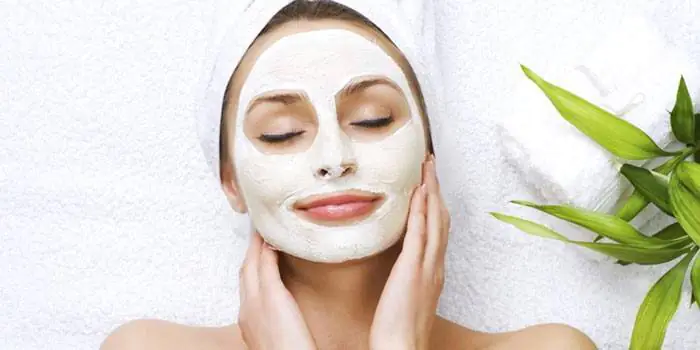
Effective masks
The visual side of the issue can be partially resolved even at home, using the following recipes for masks against facial hyperpigmentation:
- For spots caused by prolonged exposure to the sun, a mixture of white clay and chamomile decoction (to a paste), which is washed off after half an hour, works well. Course – 2 weeks.
- To treat lentigo, you can try a homemade mask made from grated fresh cucumber pulp, which you need to sit with for 15 minutes. The duration of the course is until positive results appear.
Milk-yeast mask
In a situation where spots are formed under the influence of UV rays, or are associated with frequent rashes on the face (reddish areas appear after their removal), you can try one of the effective masks based on fresh milk and live yeast. They are mixed so that a paste is obtained, so the proportion is taken by eye. Apply the warm mixture to the face, leave for half an hour and carefully rinse off. Course – 2 weeks.
Lemon
If you are concerned about freckles, which tend to appear as soon as the sun begins to warm up, use fresh lemon juice daily: they need to be wiped over those areas of the face where pigmentation forms. If the skin is dry, mix the juice with live (!) yeast using a 3:1 ratio. Apply the mixture thinly to the face, hold for 10 minutes and rinse, then lubricate the treated areas with cream. The procedures are recommended to be carried out every evening for 3 weeks.
Parsley juice
Fresh chopped parsley also shows good results: the prepared pulp is combined with fresh milk (only 2 tbsp for a large bunch of greens). Apply the mask onto your face in a thick layer and wash off after half an hour. The duration of the course of “treatment” is not limited - you can carry out the procedures until noticeable results appear, or 3-4 weeks and take a break.
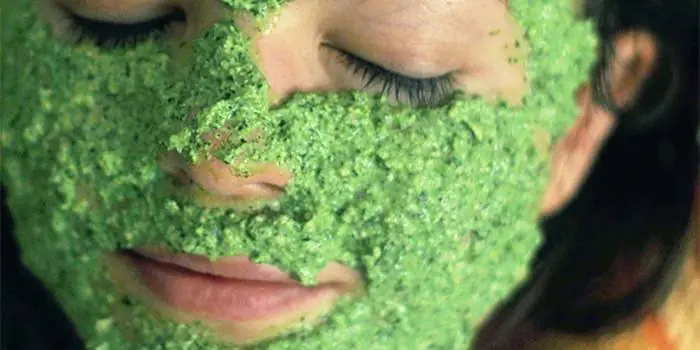
Prevention of occurrence
You can only protect yourself from hyperpigmentation associated with vitamin deficiency, the functioning of internal organs, or exposure to sunlight:
- do not get carried away with tanning (especially from a solarium) and do not go outside in the summer and spring without SPF products;
- take multivitamin complexes;
- monitor the condition of your liver.
Content
A perfectly even tone and the absence of yellow spots on the face indicate a woman’s health. At the first signs of unwanted pigmentation, you should consult a doctor or use simple folk remedies. Due to hormonal imbalance and excessive attention to one's appearance, unwanted spots appear on the face.
Causes
A timely established history of the disease will help to cure it faster, or make the appearance more attractive.
- Problems with excess amounts of the hormone during pregnancy or breastfeeding may not cause discomfort other than external unattractiveness;
- Frequent exposure to the sun and exposure to ultraviolet radiation on the skin;
- Using low-quality cosmetics, which leads to the formation of acne and rashes;
- Frequent visits to the solarium;
- Hereditary factor, predisposition to yellow dots is inherent in genes;
- Abnormal menstrual cycle;
- Endocrine diseases associated with thyroid dysfunction;
- Traumatic skin injuries such as burns, furunculosis or acne;
- Diseases of the liver and kidneys cause pigmentation with yellow spots, which disappear after treatment;
- Mental disorders and nervous tension at work, stressful situations;
- Lack of vitamins in the body;
- Excessive use of medications, especially antibiotics;
- A sudden allergic reaction;
- Aging and fading skin;
- Adolescence and accompanying age-related acne;
- Diseases of a urological nature;
- The presence of parasites in the body;
- Tuberculosis.
Diseases
It is important to eliminate the appearance of unwanted pigmentation immediately, identify concomitant diseases and remove symptoms. Among the most common is hemorrhage, the causes of which are bleeding in vessels close to the skin. The damaged area is filled with blood from the tissues, which is why formations of red, brown and brownish-yellowish colors appear on the skin. The so-called hemorrhages may disappear over time, but can develop into hemorrhagic vasculitis, which is fraught with the appearance of suppuration inside the tissues and their death. Treatment in a hospital setting for vasculitis is recommended, along with dietary nutrition.
Addison's disease is characterized by the appearance of yellow marks on the skin; in order to prevent the spread of pigmentation, it is important to consult a dermatologist in time.
Various mechanical damage and injuries, in addition to bruises and abrasions, can cause complications in the inner layers of the epidermis, causing the appearance of yellow spots. The consequences of such injuries can be cancerous tumors, which will have a characteristic hue.
Yellow spots in newborns
In a newborn, the appearance of yellowness on the body is most often associated with meconium in the amniotic fluid during childbirth; obstructive jaundice occurs. After birth, the child is under the careful supervision of a pediatrician; after a few weeks, it usually goes away on its own. During this period, it is recommended to be exposed to more open sunlight; you can place the baby’s crib next to a window. Complex cases of jaundice, when it does not go away for several months, are treated comprehensively. During this period, in addition to medications, adjustments in the child’s diet are prescribed. But there is also acquired jaundice, which manifests itself after six months of the baby’s birth; this is associated with the early introduction of complementary foods.
Xanthomas
A really serious problem awaits the body when xanthomas appear, which are accompanied by spots on the face and throughout the body.
The main reason for its occurrence is a violation of the metabolic process in the body, hormonal imbalance. Many scientists around the world are studying xanths; the source and methods of final recovery are not fully understood. If the shape of the spots is flat and round, it occurs most often on the arms and legs, these are old people whose skin has already withered. If this is a subtype of diffuse xanthoma, then yellow papules will irritate the skin. There may be prerequisites for the occurrence of leukemia or myeloma; among the first signs is a sharp increase in cholesterol levels in the body.
Most often, girls begin to struggle with freckles in adolescence, because the reasons for their appearance are hormonal changes and frequent visits to the beach in the summer. The manifestation is typical for the summer and spring periods of the year, typical for red-haired and fair-haired girls, whose skin may produce pigment unevenly. The affected areas most often are the face and shoulders, less often the back, chest and décolleté. Small yellow spots create visual discomfort; they are not accompanied by burning or itching. It is advisable to avoid them by wearing long sleeves and knee-length shorts. Most often these are small inclusions on the skin, which can grow into oval sizes. This is the case when hereditary predisposition plays a major role in the formation of the skin during intrauterine development.
Options for eliminating pigmentation in the form of freckles:
- Folk remedies are most often used by girls to achieve results. Lemon juice, parsley decoction, oatmeal, fermented milk products, etc. are popular.
- Medications – creams and ready-made masks that lighten spots, making them less noticeable.
- Chemical peeling is a serious procedure for cutting off the upper layer of the epidermis, followed by a difficult recovery period. In most cases, this is a deep peeling, after which you should not go outside in the open sun for some time, and be sure to use sunscreen. It is important to use this procedure only in winter, when solar activity is minimized.
- Photorejuvenation is a more gentle procedure for the skin against yellow pigmentation; the effect is possible only when carried out in a cosmetology office.
Thus, it is possible to get rid of yellow spots, but first of all you need to consult a doctor. The specialist will determine the cause of the problem, and by eliminating the cause of the disease, the symptoms will go away on their own.
Healthy and beautiful skin with an even texture always pleases its owners. But the formation of yellow spots on it causes a lot of unpleasant moments. Along with them, the desire to quickly get rid of them is born. But not all women know how to do it correctly.
Human skin reacts to all changes occurring in the body. If yellow spots appear on the face, then there is a reason to think about your health. It is necessary, with the help of specialists, to identify the causes of their occurrence and select methods to eliminate them.
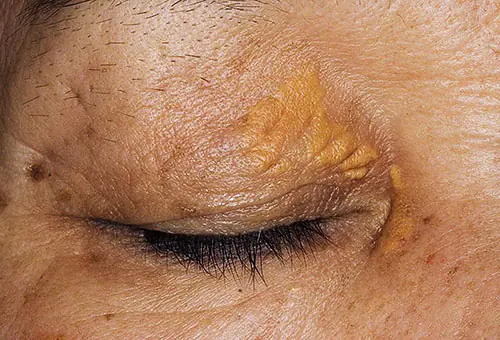
Xanthoma on the eyelid
Types of pigmentation
The epidermis contains a special substance responsible for skin color - melanin. But under the influence of certain factors, its amount may increase, leading to the appearance of spots. There are several varieties of them.
- Freckles are more common in people with fair skin types. These are harmless small pigmented formations with clear outlines. They can be multiple or single. From long exposure to the sun, they acquire a brighter color and become clearly visible.
- Nevi (moles) are small spots on the face that have relatively clear and even boundaries. There are two types: congenital and acquired. They are present in most people and are the norm, except in cases where they degenerate (malignize) into malignant formations.
- Chloasma (melasma) are larger pigment spots that do not have the correct shape and clear outlines. An increase in their size due to merging with each other is often observed.
- Lentigo is a pigmentation that appears in older people. These are yellow or light brown pigmented formations that appear on the face, hands, and neck. They arise from excessive exposure to ultraviolet radiation on the skin.
Any pigment formation is primarily a cosmetic defect. Women are especially susceptible to their appearance. They want to remove them quickly and efficiently. But it's not that simple. To get rid of stains, it is important to find out the reasons for their appearance.
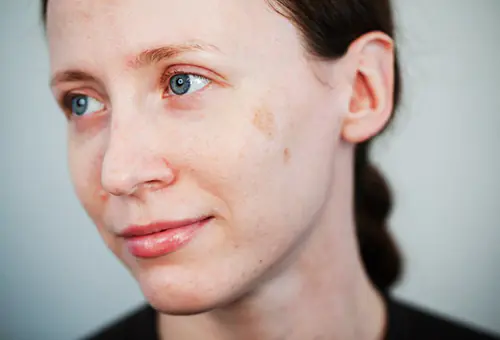
Reasons for appearance
The increase in the volume of melanin in the skin and the formation of age spots is influenced by several factors.
- Hormonal imbalance
Saturated yellow spots without clear outlines appear due to hormonal imbalance. The reasons for this disorder lie in heavy menstruation, taking hormonal contraceptives, pregnancy, menopause and even stress. There is no special treatment to remove pigmentation.
If the formation of such spots is associated with a gynecological disease or endocrine disorders, the underlying disease is treated first. Normalizing hormone levels will help remove them or significantly lighten them.
Severe furunculosis, burns, acne, and unsuccessful facial peeling lead to the appearance of pigmentation. The intensity of the spots is related to the extent of the lesion and the characteristics of the skin.
To get rid of them, it is often not enough to use only local remedies. It is necessary to use complex therapy.
The aggressive influence of the sun or other ultraviolet sources (solarium) leads to the formation of spots. They primarily appear on the face, since here the skin is thin and more vulnerable.
Ultraviolet radiation has a particularly dangerous effect in the spring, when the skin is partially depigmented. Using sunscreen and glasses at this time does not always prevent stains from forming.
- Pathologies of internal organs
Many experienced doctors can make a diagnosis based on the skin condition. This is explained by the fact that pigment formations are considered a secondary symptom of diseases of the internal organs. The diagnosis of the disease is influenced by color, shape and location.
If a yellow round spot is on the forehead, then with a high degree of probability this sign indicates existing problems of the nervous system. Yellowish-brown, located on the face and neck - kidney pathology, darker ones near the mouth and chin - problems with the gastrointestinal system.
To remove them, no separate treatment is required. They usually disappear or lighten up after the functioning of the organs normalizes.
- Taking medications
Often, long-term treatment with pharmaceutical drugs leads to the formation of spots. Such means include:
- hormonal contraceptives;
- some groups of antibiotics;
- diuretics;
- non-steroidal anti-inflammatory drugs.
It’s not difficult to remove them; just contact a specialist to replace the drug with another one.
Yellow spots on the face and hands, unfortunately, appear after 40 years. The reasons for their formation are increased synthesis of melanin and its uneven distribution under the skin, hormonal changes in the body. Their formation is often associated with chronic pathologies, the number of which increases with age.
Pigment formations themselves do not pose a danger to their owner, but they always indicate that changes have begun in the body. Their appearance is a reason to pay attention to your health and undergo a full examination.
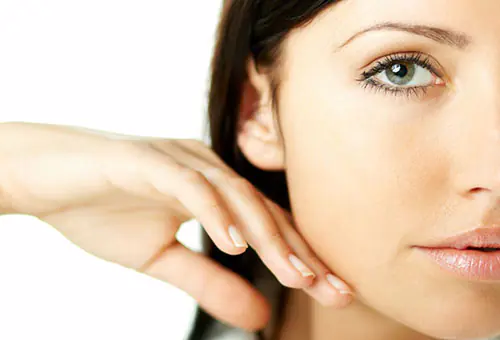
How can you remove stains?
To get rid of pigmentation, you must first eliminate the causes of its manifestation. This will require consultations and examinations with a therapist, endocrinologist, gastroenterologist, and gynecologist. A positive result of therapy for the underlying disease will lead to spontaneous and significant lightening of the spot.
If it remains visible after treatment, beauty salons can offer several lightening methods:
- whitening;
- cosmetical tools;
- salon procedures.
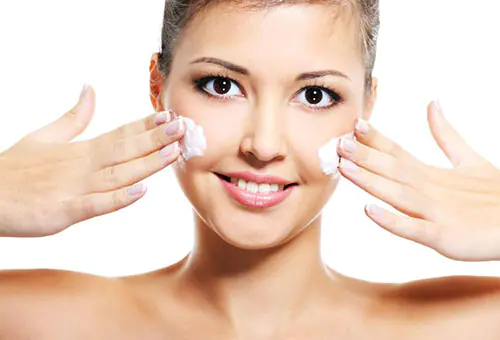
Whitening
The following products are commonly used bleaches:
- Hydrogen peroxide (3%) – it is applied only to pigment formations, since peroxide can seriously injure “clean” skin;
- A cream containing mercury is a strong bleaching agent, used only for short-term effects, since frequent and long-term use will lead to skin irritation;
- Zinc-based paste is a safer, non-aggressive product that gently lightens the skin and additionally helps get rid of acne and fine wrinkles.
The use of mercury cream is unacceptable for pregnant and nursing mothers.
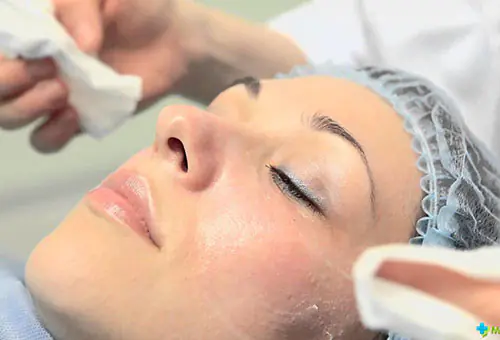
Cosmetic procedures
They are performed only in beauty salons (clinics) by a cosmetologist or dermatologist. They can be removed using the following procedures.
- Peeling (chemical, ultrasonic). For chemical acids, acids of a certain concentration are used (fruit, grape, glycolic). They exfoliate the top pigment layer and renew the skin. Ultrasonic peeling is carried out using equipment that introduces bleaching agents into the surface layer.
- Laser treatment is an effective but painful procedure. After it is carried out, it is necessary to use products that heal and regenerate the skin. This procedure is recommended to be done in winter, when the sun is less active and does not affect the skin of the face.
- Phototherapy. It is carried out with a device that affects damaged skin with intense light pulses. Penetrating into pigment formations, they destroy melanin.
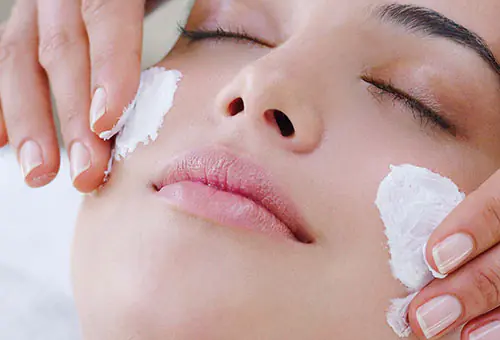
Salon products
If the spots are small and few in number, have a small area of distribution and are not very pronounced, cosmetologists select products that help to gently lighten the skin. These are special creams and gels that protect the skin from ultraviolet radiation, lighten it, and reduce melanin production. But their use must be under the supervision of a specialist. An incorrectly chosen dosage and course of application can lead to the opposite effect - the growth of spots and an increase in their contrast with the main skin color.
There are reasons when the use of many cosmetics may be contraindicated: for diseases of the liver, kidneys, and thyroid gland. They cannot remove age spots on the face during pregnancy and while breastfeeding.
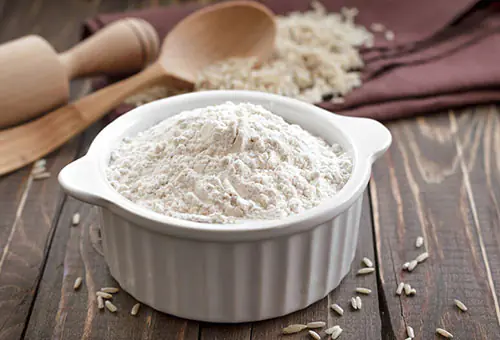
Folk remedies
Folk remedies will help get rid of pigmentation. They are effective on small surface stains. You can try the following masks.
- From cucumber: grate the fresh vegetable and apply for 20-30 minutes.
- From yeast with lemon juice: mix yeast (20 g) with juice (15 ml) and apply to the stain for 15-20 minutes.
- From rice flour: 2 tsp. mixed with honey (1 tsp), vinegar (1 tbsp) and applied for 20-25 minutes.
- From egg white: white from 1 egg is mixed with juice from ¼ of a lemon, hydrogen peroxide (4 drops), applied for 10 minutes.
- From cottage cheese: 1 tbsp. l. cottage cheese is mixed with hydrogen peroxide and ammonia (10 drops each) and applied for 15 minutes.
To avoid exposing your skin to additional sun damage, lightening with these products is best done in the evening.
Despite the fact that folk remedies have a gentle effect on the skin, it is important to consult a cosmetologist before using them. This is necessary to prevent the development of allergies and irritation.
If you manage to cope with the stains, you don’t have to stop taking care of your health. Regular visits to specialists to correct the treatment of the underlying disease, proper nutrition, taking multivitamins, and using sunscreen will help avoid their recurrence.
By secret
Face younger in just 11 days!
Even at 40 you can look 21 if you apply it on your face at night.



